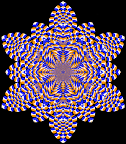Another great optical illusion effect. Here we see a photo of the Perseids Meteor shower that is phenomenal.
I would marvel at photos like this and think that he must have very special equipment or be at very high altitude to see this many meteors in such a short exposure. The truth is that this image was shot over six hours in multiple 30 second exposures. Then digitally combined to form this image. Absolutely amazing!
How many meteors do you see? (Click on the image for a high resolution version)
Credits for this photo and the answer to this question are below the image.
Credit & Copyright: Fred Bruenjes
Explanation: Comet dust rained down on planet Earth last August, streaking through dark skies in the annual Perseid meteor shower. So, while enjoying the anticipated space weather, astronomer Fred Bruenjes recorded a series of many 30 second long exposures spanning about six hours on the night of August 11/12 using a wide angle lens. Combining those frames which captured meteor flashes, he produced this dramatic view of the Perseids of summer. Although the comet dust particles are traveling parallel to each other, the resulting shower meteors clearly seem to radiate from a single point on the sky in the eponymous constellation Perseus. The radiant effect is due to perspective, as the parallel tracks appear to converge at a distance. Bruenjes notes that there are 51 Perseid meteors in the composite image, including one seen nearly head-on. This year, the Perseids Meteor Shower will peak in the early morning hours on Friday, August 12.









0 comments:
Post a Comment | Random Illusion